by Carrie Stevenson | Apr 21, 2014
As spring commences and young wildlife of all species are born, everyone’s favorite flying, furry mammal also begins roosting season. Ideally, bats will find shelter in trees, caves, abandoned buildings, and bat houses, but sometimes they end up in a home. I receive calls often about how to best remove or exclude a group of bats living in an attic or garage. While there are countless benefits (most notably, efficient insect control) to having bats in one’s landscape or neighborhood, most people prefer they not share their own home with them. However, due to their slow reproductive cycle and declining populations in the United States, it is illegal in Florida to prevent bats from returning to any roosting location from April 16 to August 14. Female bats typically give birth during maternity season to one pup (or rarely, two), which will cling to the mother’s fur to nurse for their first few weeks and months of life. Being nocturnal, this means mothers and babies will be inside a dwelling during the day. Typically, if a homeowner is trying to exclude bats from a home, they will put up netting or seal up a hole in an attic entry in the evening after bats have flown off to feed on insects at night. However, if this is done during roosting season, young bats left back in the roost while mothers are hunting can get trapped inside a building and will not survive.
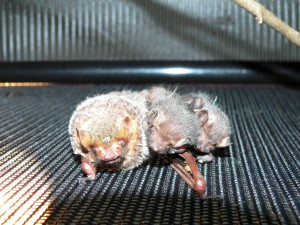
A rare set of twin Seminole bat pups with their mother. Photo credit: Carrie Stevenson
This obviously has the potential to cause conflict between homeowners and the bat population. The Florida Fish & Wildlife Conservation Commission has regulatory oversight for bat-related issues, and they will work with citizens to arrange a positive outcome for both the property owner and the animals involved.
Bat populations are declining in North America due to a devastating disease called white-nose syndrome and loss of habitat. However, you can help these fascinating animals by installing a bat house in your yard. Keep in mind that bats attracted to bat houses prefer to be in open areas away from trees (where their predators hide), and the house should be installed at least 12 feet in the air. Bat houses can be purchased or built rather simply—keep an eye out for Extension workshops near you, or visit this UF Wildlife Ecology publication or Bat Conservation International’s website for simple instructions.
To learn more about bats and how to help them, visit this website or contact me or your local County Extension office!
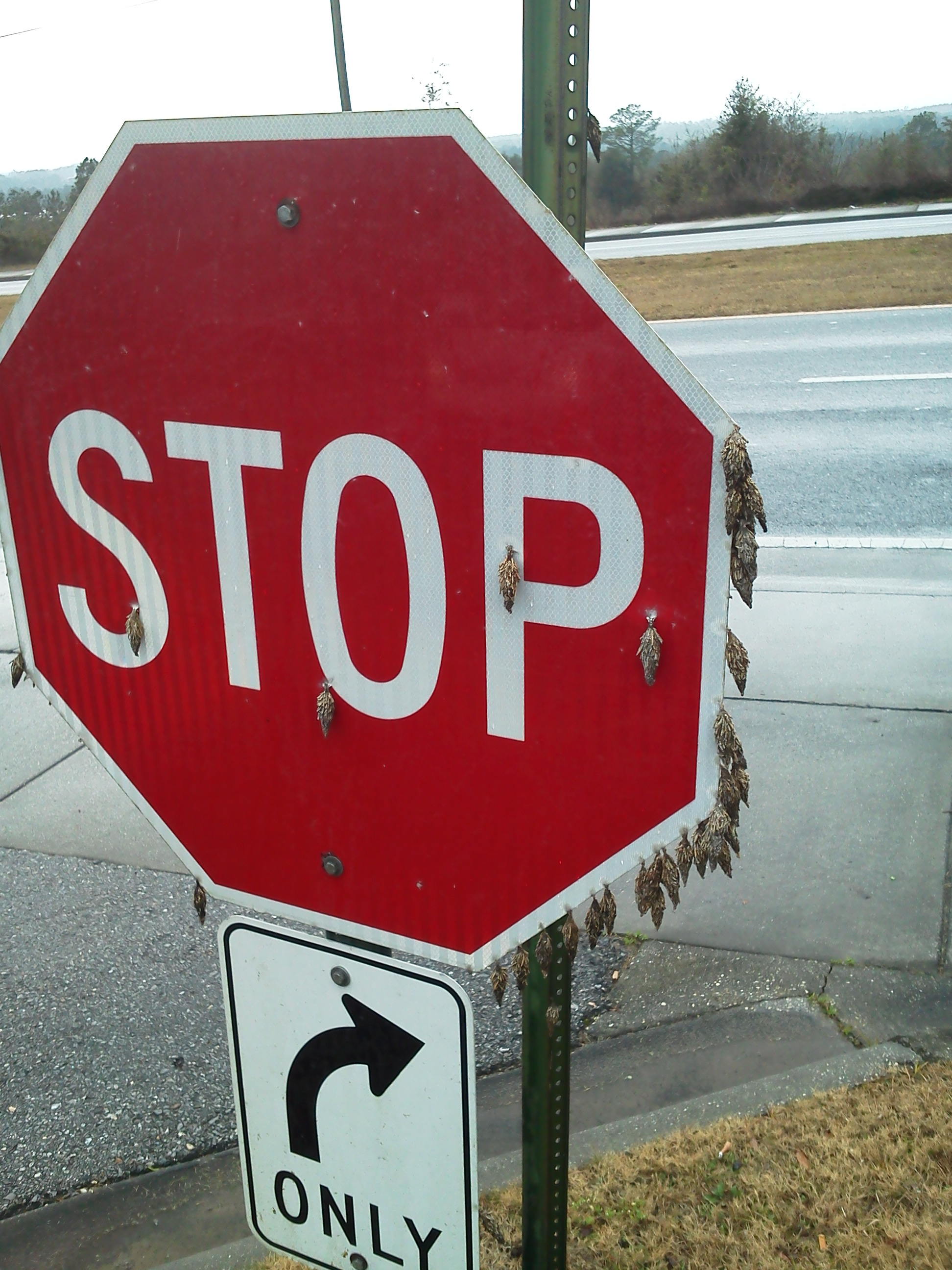
by Sheila Dunning | Apr 15, 2014
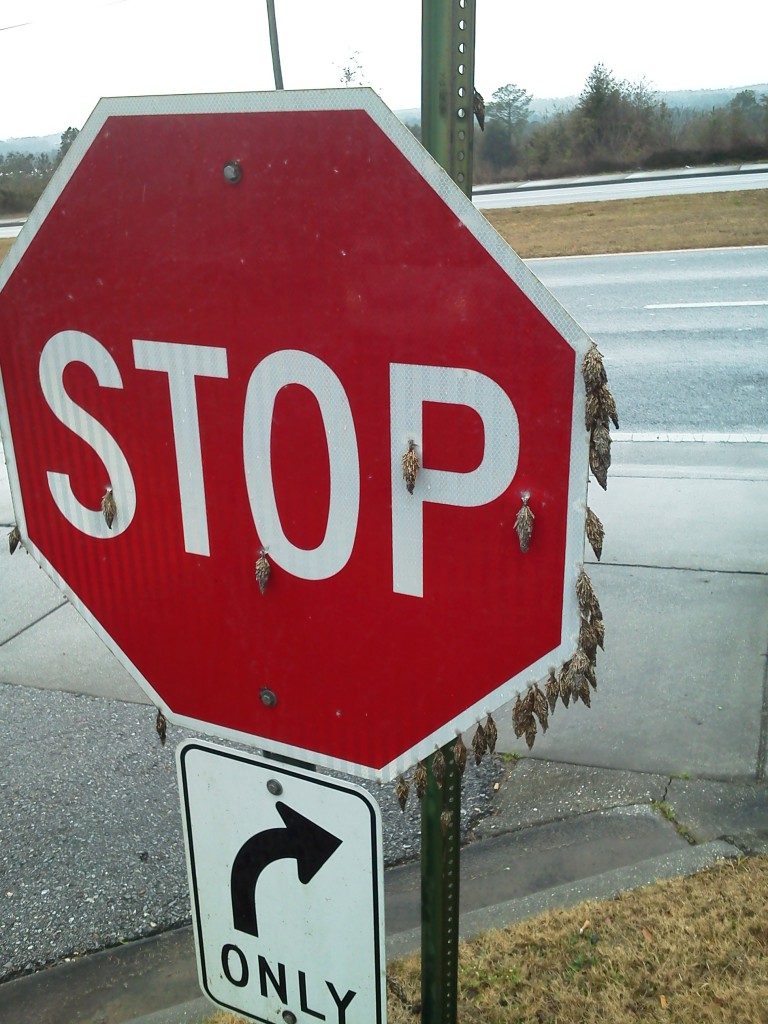
Bagworms on a stop sign
Northwest Florida is the most southern range of the common bagworm, Thyridoptgeryx ephemeraeformis, but the majority of the plants they feed on can be found here. Common host trees include Red Cedar, Live Oak, Maple, Elm and Pine. Other susceptible shrubs include Indian Hawthorn, Juniper, Arborvitae, Ligustrum and Viburnum.
Bagworms overwinter as a clutch of 500-1000 eggs wrapped in the leaves of the infested plant. In late spring the larvae hatch as tiny caterpillars that disperse to surrounding plants by spinning a silken thread and “ballooning” on the wind.
Once established on a host plant the young bagworms begin feeding and constructing a bag which is formed using pieces of twigs, leaves and silk.
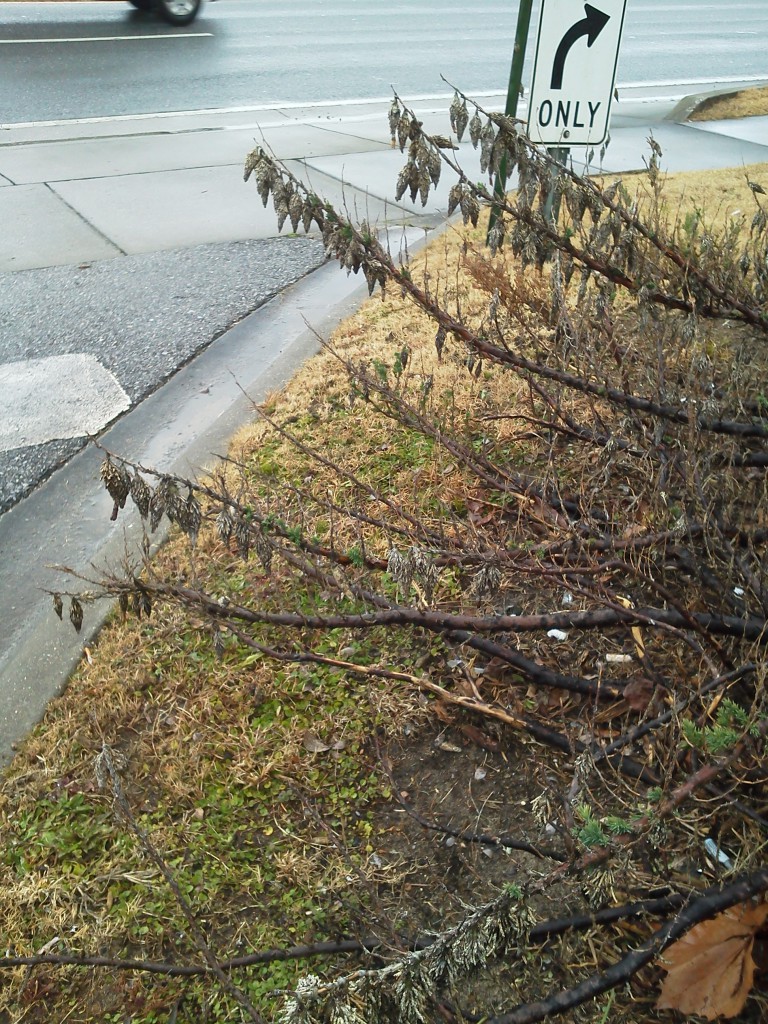
From then on, only the head and thorax of the female bagworms emerge from the foliage bag. She continually feeds on the plant, leaving it severely defoliated. As few as four bagworm larvae can cause a four-foot Arborvitae to be so damaged that it can’t ever grow enough foliage to return to a normal appearance. For four to sixteen weeks the caterpillars feed steadily. Once the larva has consumed enough food during the last instar, it attaches its bag securely with a thick silken strand to its host plant or nearby structure. The bagworm seals the posterior end of the bag, molts, and begins pupation. The bagworm’s 7-10 day long metamorphosis results in a moth. However, the adult female’s wings and appendages are reduced to mouthparts, legs and small eyes. She remains in a caterpillar-like state for a couple of weeks. She releases a pheromone that attracts the male. The male bagworm emerges as a free-flying, lacey, black moth that only lives one or two days; just enough time to mate with the female in her bag. Once mated the female then dies, mummifying around her eggs.
Bagworm populations can reappear in the same areas year after year. To control bagworms, mechanical methods and biological insecticides are the most effective practices. Hand-picking them from late fall to early spring and placing them in a bucket of soapy water or a sealed bag prevents new larvae from dispersing. Applying Bt, Bacillus thuringiensis, to the foliage is also an effective means of control when applied to new spring growth. This bacteria stops the feeding of all caterpillars, so be cautious about where it is used. Many desirable butterfly larvae can be harmed if the product lands on other larval plants.
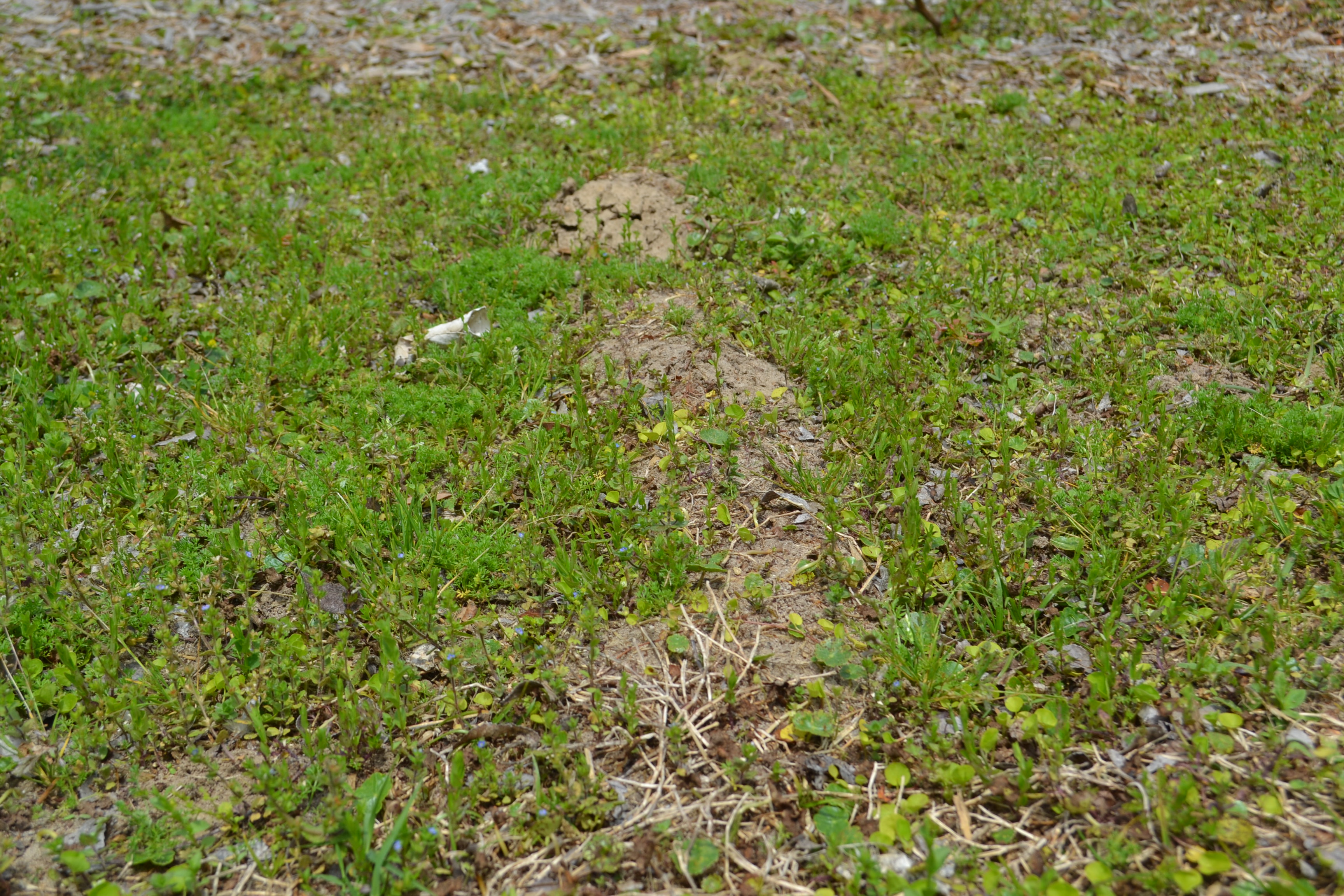
by Beth Bolles | Apr 15, 2014
How can an animal that does such much to help rid your lawn of pests be so hated by most homeowners? Such is the life of the mole.
The beneficial mammal is a soil dweller that tunnels through the soil, increasing aeration as it searches out a meal of beetle grubs, mole crickets, and slugs. Moles prefer loose soil and can tunnel more than 15 feet an hour. Moist soil brings the food source closer to the surface which in turn bring moles up to expose raised tunnels to homeowners. These tunnels are mostly cosmetic and show up easily in mulched areas and lawns with heavier weed populations. Most homeowners with a healthy, thicker lawn will rarely notice mole activity unless they encounter loose areas as they walk over the turf. These can easily be pressed back down with your foot.

Mole tunnel in weedy area. Photo: Beth Bolles, UF IFAS Extension Escambia County
There are management techniques for moles which include traps and ridding the lawn of the food source. The best practices are to manage the turf through proper mowing, watering, and fertilizing to create a uniform, healthy cover. For the most part, mole management is not even required. Consider the benefits of the moles as predators and allow them to be a natural part of the landscape environment. For more information on moles read the University of Florida IFAS Extension publication.
by Gary Knox | Mar 18, 2014
Given crapemyrtle’s reputation for plant vigor and pest resistance, I was shocked to see Chinese crapemyrtles noticeably affected by a previously obscure pest.
Last November I had the privilege of traveling to China with Dave Creech (Stephen F. Austin University), Mengmeng Gu (Texas A&M) and Yan Chen (LSU-Hammond). Crapemyrtles, Lagerstroemia spp., are native to Asia, and China is regarded as the first to cultivate crapemyrtle as a flowering tree. As a crapemyrtle enthusiast, I eagerly looked forward to seeing Lagerstroemia collections in Chinese botanical gardens. What we saw in Beijing surprised us.
![Figure 1 Note the black sooty mold coating the layers of white and grey scale, believed to be crapemyrtle bark scale, Eriococcus lagerstroemiae. [Photo by Gary Knox in Beijing, China]](https://nwdistrict.ifas.ufl.edu/hort/files/2014/03/crapemyrtle-scale-768x1024.jpg)
Figure 1 Note the black sooty mold coating the layers of white and grey scale, believed to be crapemyrtle bark scale, Eriococcus lagerstroemiae. [Photo by Gary Knox in Beijing, China]
Symptoms, Appearance and Distribution in China
An early symptom of crapemyrtle bark scale is black sooty mold covering extensive areas of leaves and stems as a result of honeydew exuded by the scale. Individual scale insects are white to gray in color and ooze pink when crushed (Fig. 2). Large populations build up in branch crotches and extend up branches, appearing crusty white to gray. This scale usually is not present on new growth, leaves or slender stems unless infestations are heavy.
![Figure 2. This white to grey colored scale oozes pink when crushed. [Photo by Gary Knox in Beijing, China]](https://nwdistrict.ifas.ufl.edu/hort/files/2014/03/crapemyrtlescale2-505x1024.jpg)
Figure 2. This white to grey colored scale oozes pink when crushed. [Photo by Gary Knox in Beijing, China]
We found this scale on crapemyrtle in all four cities we visited, across hardiness zones roughly equivalent to USDA Cold Hardiness Zones 6b to 9 (Beijing, Zone 6b/7a; Nanjing, Zone 8a/8b; Shanghai, Zone 8b/9a; and Kunming, Zone 9). However, this scale was not found on all crapemyrtle. My personal observation is that stressed plants appeared more susceptible to this scale, as exemplified by infestations on freeze-damaged crapemyrtle in Beijing (Fig. 3) or in a poorly maintained planting in the Nanjing Airport parking lot. Our hosts indicated the problem appeared to be more severe on hybrid cultivars introduced from the U.S., and our observations mostly confirmed that.
In the U.S.?
Unfortunately, crapemyrtle bark scale or a similar scale may already be in the U.S. A new scale insect believed to be a species of Eriococcus was first discovered in the Dallas, Texas, area in 2010 where it is problematic on landscape crapemyrtles. It has not been definitively identified by entomologists yet and management recommendations are still being developed. However, this scale has since been observed in Shreveport, LA, Memphis, TN, and Little Rock, AR, undoubtedly being moved with plants. The expanding distribution of this scale and my personal observations of crapemyrtle bark scale throughout China suggest this scale could have a widespread and severe impact on crapemyrtles in landscapes.
![Figure 3. Dr. Gu is dismayed at seeing this crapemyrtle planting infested by scale (note the black sooty mold on stems). [Photo by Gary Knox in Beijing, China]](https://nwdistrict.ifas.ufl.edu/hort/files/2014/03/crapemyrtlescale3-767x1024.jpg)
Figure 3. Dr. Gu is dismayed at seeing this crapemyrtle planting infested by scale (note the black sooty mold on stems). [Photo by Gary Knox in Beijing, China]
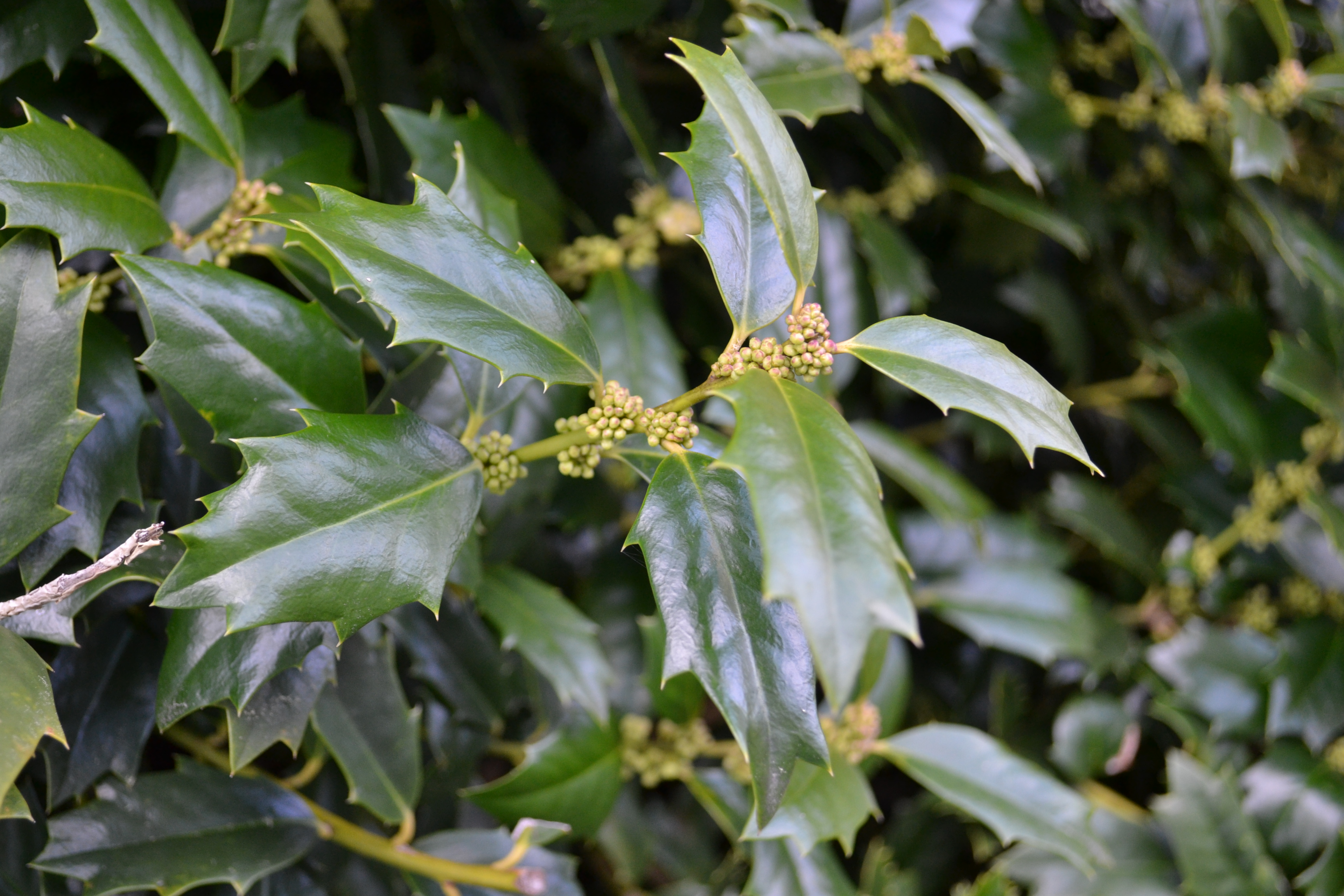
by Beth Bolles | Mar 12, 2014
Landscapes will soon be transitioning from the dormant phase to actively growing and one of the most beneficial insects of all will be back in action. As soon as flowers open, bees will be visiting to gather pollen and nectar.
This year be a little more observant in the landscape and at your local nursery so that you protect bees during your yard activities. Several insecticides will have new labels that indicate a toxicity to bees and restrictions about applications to blooming plants. Since many landscapes have a wide variety of blooming plants, be very careful not to inadvertently spray when bees are visiting open flowers. Bees are not only killed by a direct spray of certain insecticides, but may carry residual pesticides back to the colony in pollen and nectar.
Since bees and other pollinators are so vital to our food production system, all people who work in landscapes or enjoy gardening as a hobby, need to be a part of bee protection. Read labels, only spray when absolutely necessary, and learn that a little cosmetic damage is worth it in order to protect pollinators.
Some selections of hollies are one of the first landscape shrubs visited by bees in the winter. Learn about the other plants in your yard that are visited by bees so you are better able to protect them.
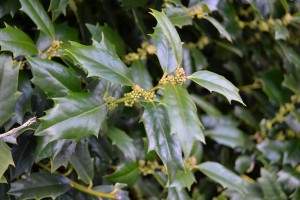
Holly flowers will soon open.
Photo: Beth Bolles, UF IFAS Escambia County Extension

by Julie McConnell | Feb 18, 2014
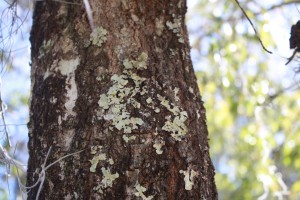
Lichen on trunk of oak tree. Image: Julie McConnell, UF/IFAS
Spanish moss and lichen have earned an inaccurate reputation for damaging trees and shrubs in the Florida landscape. Although they may be found in plants that are in decline or showing stress symptoms, they are simply taking advantage of space available to survive. Both plants are epiphytes and are obtaining moisture and nutrients from the atmosphere rather than from the plants they rest upon.
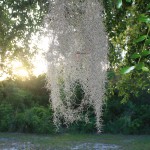
Spanish moss. Image: Julie McConnell, UF/IFAS
Lichen are more commonly found on plants that are in poor health because they need a plant that is growing slowly and access to sunlight. These conditions can typically be found in thin canopies of trees and shrubs under stress. Although they are firmly attached to the surface of the plant, they are not taking nutrients from the tree or shrub, but rather from the air and other sources such as organic debris and bird excrement. If you find lichen on your landscape plants, look further into what stress factors might be causing the plant to grow slowly such as compacted soil, extreme weather conditions, drought stress, disease or insect pressure.
Spanish moss does not harm trees and many people find it an appealing asset to their landscapes. Common misconceptions about Spanish moss include that the weight causes branches to break and that it is a host site for chiggers. Spanish moss is very light and any additional weight is typically insignificant. Although it may harbor some insects and provide nesting material for birds and other wildlife, Spanish moss in trees is not a site conducive to chiggers because they favor low-lying moist environments.
To read more about Spanish moss, lichens, and other common epiphytes please read the EDIS publication “Spanish Moss, Ball Moss, and Lichens – Harmless Epiphytes.”







![Figure 1 Note the black sooty mold coating the layers of white and grey scale, believed to be crapemyrtle bark scale, Eriococcus lagerstroemiae. [Photo by Gary Knox in Beijing, China]](https://nwdistrict.ifas.ufl.edu/hort/files/2014/03/crapemyrtle-scale-768x1024.jpg)
![Figure 2. This white to grey colored scale oozes pink when crushed. [Photo by Gary Knox in Beijing, China]](https://nwdistrict.ifas.ufl.edu/hort/files/2014/03/crapemyrtlescale2-505x1024.jpg)
![Figure 3. Dr. Gu is dismayed at seeing this crapemyrtle planting infested by scale (note the black sooty mold on stems). [Photo by Gary Knox in Beijing, China]](https://nwdistrict.ifas.ufl.edu/hort/files/2014/03/crapemyrtlescale3-767x1024.jpg)




